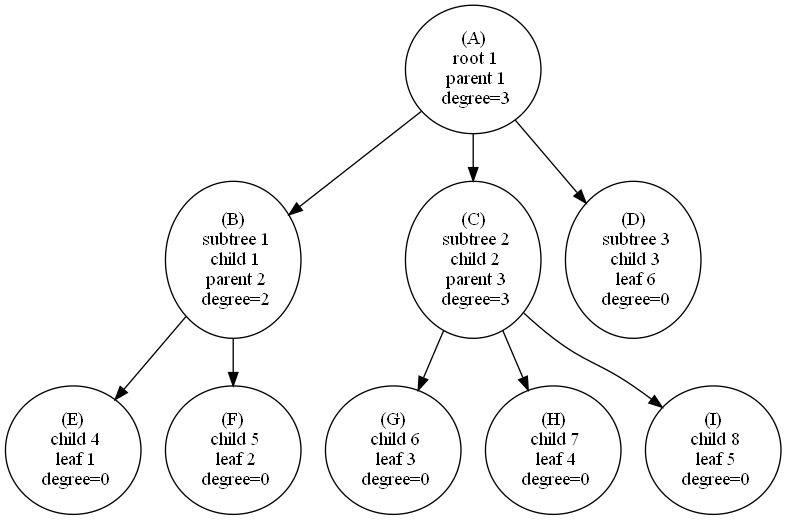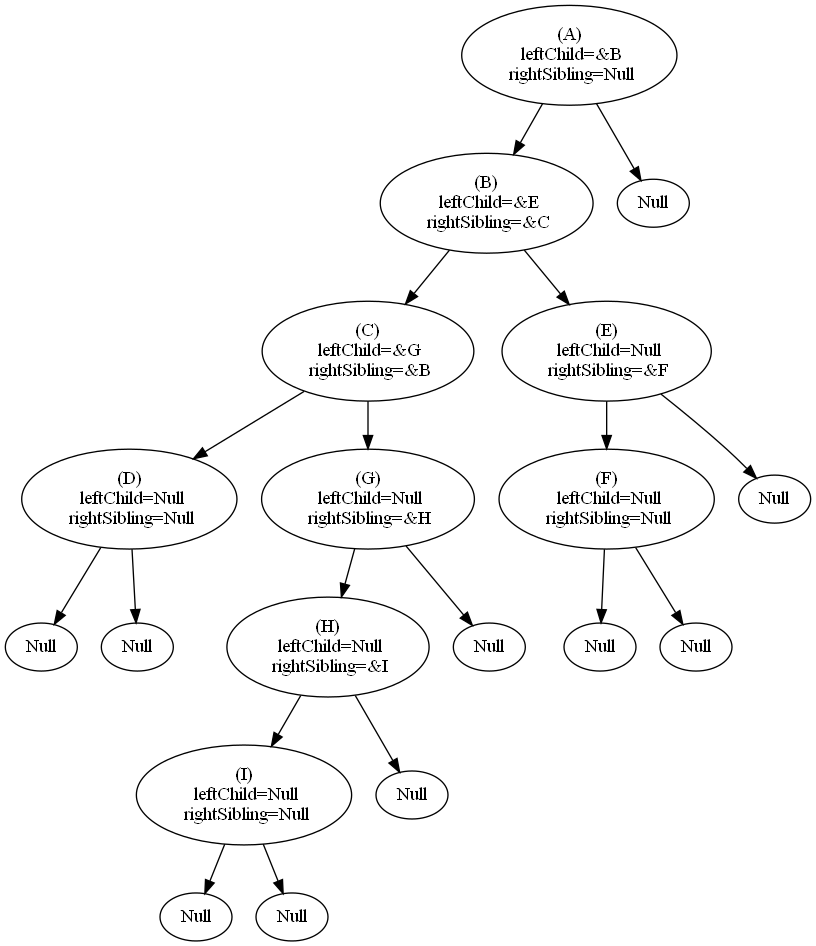parent / father
A is parent of {B, C, D}.B is parent of {E, F}
child / son / subtree
B, C, and D are child from A.ancestor
All root from this node.A and B are ancestor from E.
descendant
Except A from the tree, all nodes are descendant from A.brother / sibling
C is brother from B.F, G, H, and I are brother from E.
leaf
Degree is zero.level | height / depth
Example from graph.level 1 = A.
level 2 = {B, C, D}
level 3 = {E, F, G, H, I}
depth = 3



